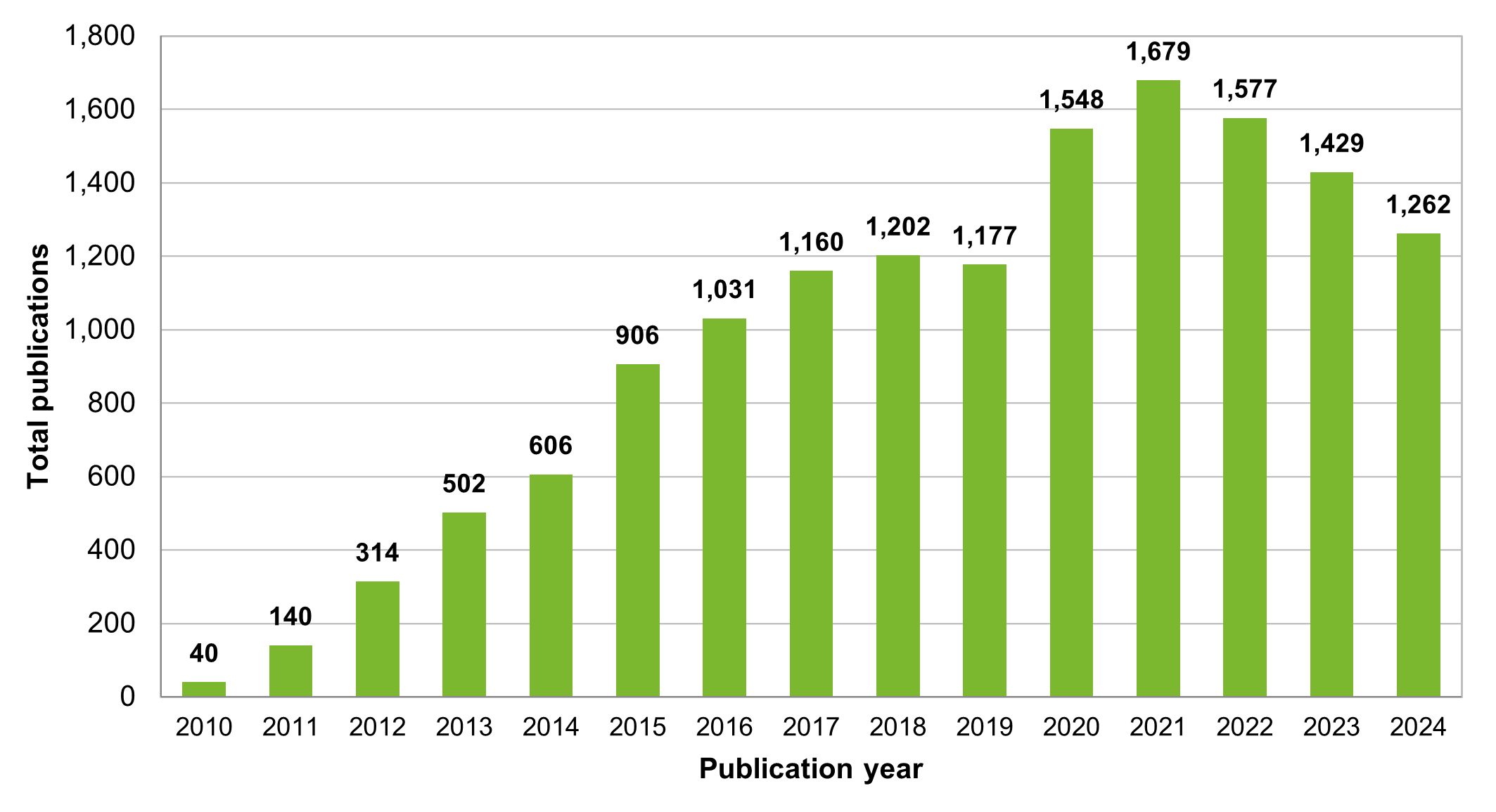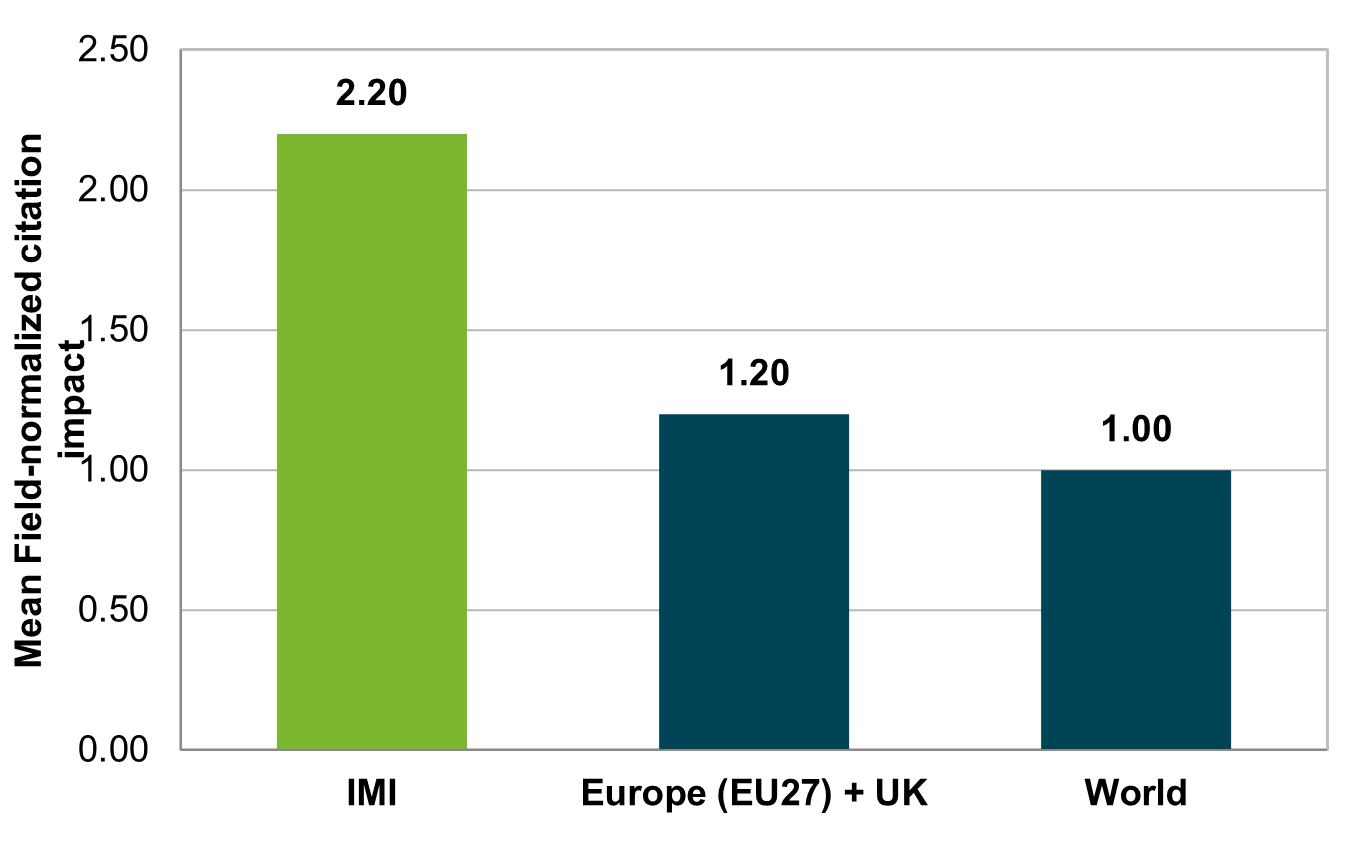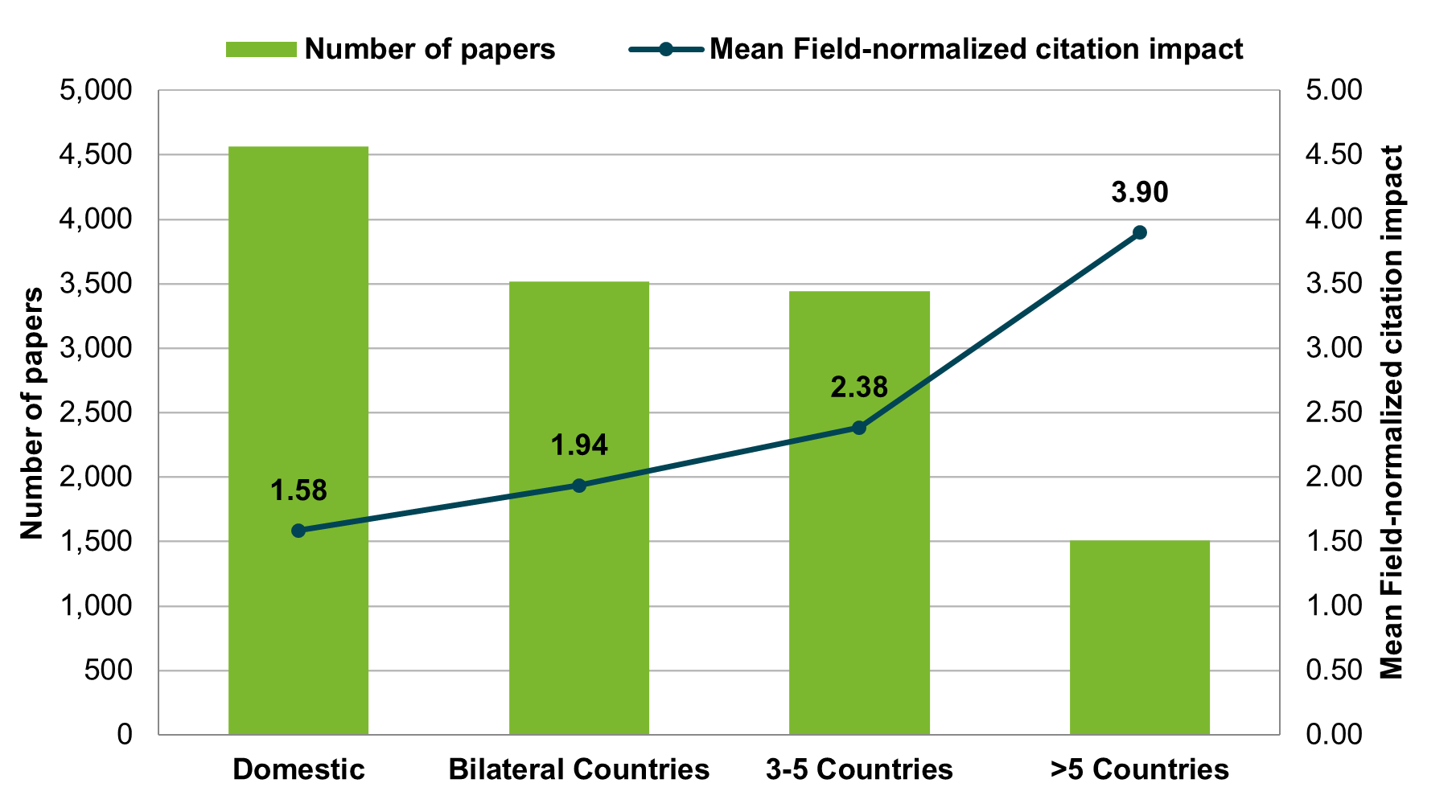Measuring and evaluating publication output is one of the key ways that the impact of a scientific funding programme can be measured. Publishing scientific results is the chief way that scientists communicate to each other about their findings and it adds to the body of knowledge that can then be built upon in years to come.
IHI and IMI deliver a large quantity of high-quality scientific results, and every year, IHI commissions the production of a bibliometric report to evaluate the performance of our research outputs. The latest report, covering papers published from 2010 to 2024, has now been published.
The report highlights that IHI and IMI projects are very productive and that the results being published are highly influential in their respective fields. Comparisons to other funding bodies for highly cited papers show that IHI and IMI rank first.
“The results of this report indicate that the secret to solving health challenges lies in international collaborative research across sectors,” said IHI’s Executive Director, Niklas Blomberg. “IHI’s unique formula, bringing everyone to the table, is generating excellent research results with more than 14 600 papers published between the IHI and IMI programmes. It is clear from this report that IMI research has a strong influence on the various fields that it covers, and we rank first for impactful citations when compared to other similar funding organisations with almost one-third of IMI research landing within the top 10% most cited papers in their research field.”
Here are some of the key take-aways from the report:
Together, IHI and IMI have published more than 14 600 research papers
The IHI programme has published a total of 65 papers from 2023 to 2024 and IMI has published 14,573 from 2010 to 2024. From the graph below you can see that IMI publications reached a peak in 2021, and although the trend is decreasing as IMI finished in 2021, a high number of papers still continue to be published as projects wrap up and write up their results. IHI launched its first calls in 2022, and reached 16 publications in 2023 and 47 in 2024.

IHI and IMI publications have a high citation impact
Citation impact is an important indicator of a paper’s relevance to the field. It refers to the number of times that other researchers refer to a paper within their published work. Field-normalised citation impact takes into account differences in citation trends between various fields of science – for instance, papers in biomedicine typically receive more citations than those in engineering.
IMI publications have received almost 700 000 citations since 2010, and the field-normalized citation impact of IMI is more than twice that of the world average (2.20), and 83% greater than the EU27+UK at 1.20.

IHI publications also score well, with more than twice that of the world average (2.43), and more than double that of the EU27.
One third of IMI papers are in the top 10% most cited papers globally per research field
IMI ranks first when compared to similar research funding organisations for highly cited papers. Almost one-third of all IMI funded research papers between 2010 and 2024 are in the top 10% most cited paper globally in their research field.

International, cross-sector collaborative research results in higher impact
In the three short years since IHI started, 63 publications have been published in 49 distinct scientific journals. 96% of those papers resulted from collaborative work between different industrial sectors, institutions and countries, and almost 90% involved international collaboration.
IMI has a strong track record of collaboration across sectors, countries and institutions. From the bibliometrics data, collaboration also clearly pays dividends – papers resulting from international collaborations record a field-normalized citation impact of 2.47, while cross-sector and cross-institution collaborations have citation rates at 2.37 and 2.27 respectively.
The report also calculated that IMI papers that have five or more affiliated countries have citation rates almost four times the world average (3.90) – more than double that of IMI funded papers which only feature domestic collaborators.

Hot topics: reaching the top 0.1%
The bibliometrics report lists papers that rank in the top 10% and even those that have entered the top 0.1% in their fields. IMI papers exert a strong influence over their respective fields with 112 publications landing in the top 0.1%.
As an example of a paper that hit the 0.1% mark, the PREDICT-OM project released a highly influential paper published in Nature Medicine that demonstrated a blood-based and minimally-invasive biomarker which could potentially aid the molecular diagnosis of frontotemporal dementia disorders and amyotrophic lateral sclerosis. The work may also have implications for Alzheimer’s disease. The paper was published on 21 March 2024 and has already been cited by 142 other publications.
